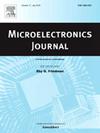An investigation of how circuit parameters affect the short-circuit type 2 ruggedness in FS-IGBT
IF 1.9
3区 工程技术
Q3 ENGINEERING, ELECTRICAL & ELECTRONIC
引用次数: 0
Abstract
Field-stop insulated gate bipolar transistors (FS-IGBTs) are extensively utilized in various power applications because of their lower conduction and switching losses. However, as application conditions become more demanding, there is an increasing need for improved reliability and ruggedness of the FS-IGBT. Short circuits are one of the most common failures of FS-IGBTs. Under these circumstances, the device may conduct unexpectedly or operate with minimal bus parasitic inductance, leading to a significant increase in the device's junction temperature. Failure to turn off the FS-IGBT promptly may result in thermal runaway and device burnout. Short-circuit type 2 (SC2) is more frequently observed in practical FS-IGBT applications than short-circuit type 1 (SC1). Nevertheless, the majority of current research primarily concentrates on SC1, with relatively limited studies on SC2 of FS-IGBTs. This study aims to investigate the circuit parameters of SC2 and comprehensively analyze the impact of each parameter on SC2. The experimental results indicate that the bus voltage VDC, gate voltage VG, and temperature TC significantly affect the SC2 performance of the FS-IGBT. Therefore, a moderate decrease in VDC, VG, and TC can effectively enhance the ruggedness of SC2 and the short-circuit withstand time tSC of the device.
FS-IGBT中电路参数对短路2型坚固性影响的研究
场阻绝缘栅双极晶体管(fs - igbt)由于其较低的导通和开关损耗而广泛应用于各种电源应用中。然而,随着应用条件越来越苛刻,对FS-IGBT的可靠性和坚固性的要求也越来越高。短路是fs - igbt最常见的故障之一。在这种情况下,器件可能以极小的母线寄生电感进行意外操作或工作,从而导致器件结温显著升高。不及时关闭FS-IGBT可能导致热失控和设备烧毁。在实际的FS-IGBT应用中,2型短路(SC2)比1型短路(SC1)更常见。然而,目前大多数研究主要集中在SC1上,对fs - igbt的SC2研究相对较少。本研究旨在研究SC2的电路参数,综合分析各参数对SC2的影响。实验结果表明,母线电压VDC、栅极电压VG和温度TC对FS-IGBT的SC2性能有显著影响。因此,适当降低VDC、VG和TC,可以有效提高SC2的坚固性和器件的耐短路时间tSC。
本文章由计算机程序翻译,如有差异,请以英文原文为准。
求助全文
约1分钟内获得全文
求助全文
来源期刊

Microelectronics Journal
工程技术-工程:电子与电气
CiteScore
4.00
自引率
27.30%
发文量
222
审稿时长
43 days
期刊介绍:
Published since 1969, the Microelectronics Journal is an international forum for the dissemination of research and applications of microelectronic systems, circuits, and emerging technologies. Papers published in the Microelectronics Journal have undergone peer review to ensure originality, relevance, and timeliness. The journal thus provides a worldwide, regular, and comprehensive update on microelectronic circuits and systems.
The Microelectronics Journal invites papers describing significant research and applications in all of the areas listed below. Comprehensive review/survey papers covering recent developments will also be considered. The Microelectronics Journal covers circuits and systems. This topic includes but is not limited to: Analog, digital, mixed, and RF circuits and related design methodologies; Logic, architectural, and system level synthesis; Testing, design for testability, built-in self-test; Area, power, and thermal analysis and design; Mixed-domain simulation and design; Embedded systems; Non-von Neumann computing and related technologies and circuits; Design and test of high complexity systems integration; SoC, NoC, SIP, and NIP design and test; 3-D integration design and analysis; Emerging device technologies and circuits, such as FinFETs, SETs, spintronics, SFQ, MTJ, etc.
Application aspects such as signal and image processing including circuits for cryptography, sensors, and actuators including sensor networks, reliability and quality issues, and economic models are also welcome.
 求助内容:
求助内容: 应助结果提醒方式:
应助结果提醒方式:


